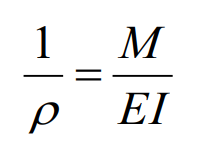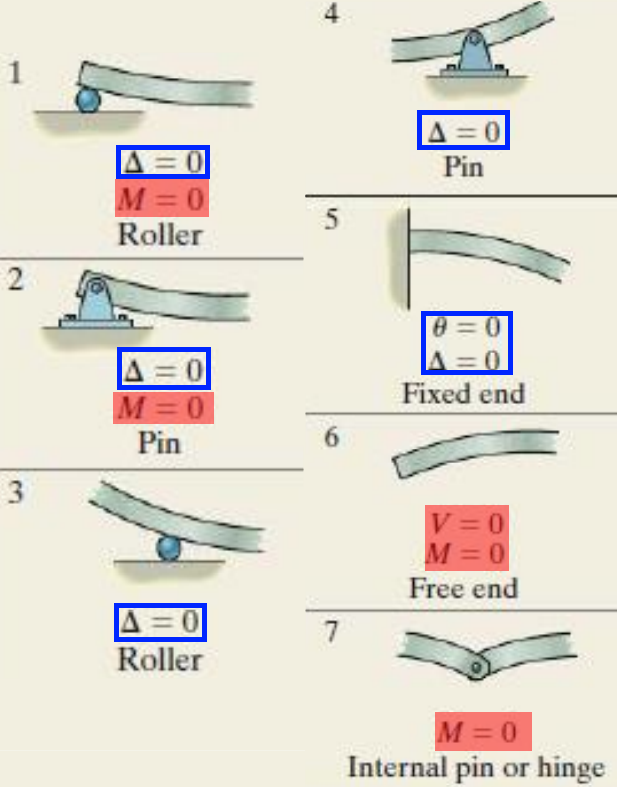SM 143 Deflection of beams
1/3
There's no tags or description
Looks like no tags are added yet.
Name | Mastery | Learn | Test | Matching | Spaced |
|---|
No study sessions yet.
4 Terms
Curvature formula
1/ρ is called curvature. EI is called flexural rigidity.
ρ is radius of curvature, M is internal moment, E is young modulus, I is moment of inertia.
sign of ρ depends on direction of M: when M is positive, ρ extends above the beam in positive υ direction, and vice versa

Calculus relationships from w(x) to v
From curvature onwards always have 1/EI
clarification: Integral of M(x) = θ/EI + C

Boundary conditions
At point force (includes supports) that is not at ends of beam: θ1 = θ2, which can be used to equate slope equations to left and right of boundary
Only θ and y is important for slope and deflection formulas

Finding Cs
Use boundary conditions and boundary positions.
eg. x = L/4 is boundary position and at that boundary θ1 = θ2. Substitute L/4 into your θ1 & θ2 equations to equate some C values.
eg. at x = 0, y1 = 0, then all x terms get cancelled and C is set to 0.